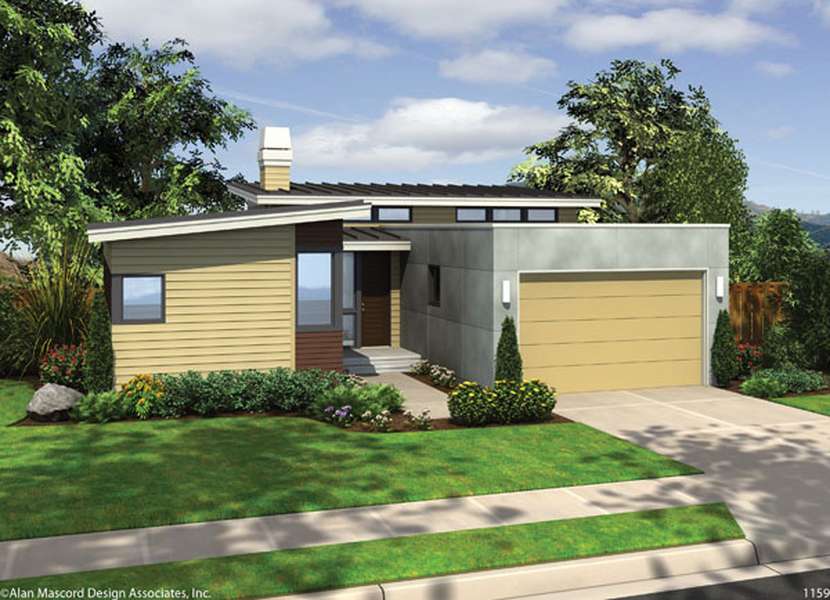Incorporating Technology into Your Home Plan: 7 Great Ideas that Will Change Your Life
All Categories
About Our Plans Building a Home Building Your Home Green Building Help and Support Hobbies & Recreation Home Building Tips and Information Home Design Home Exterior & Framing Homepage Articles House Plan of the Week How We Work Ideas and Inspiration Industry News Infographics Information & Resources Inspired Spaces Interior Design Kitchens Mascord News Modified Home Designs Outdoor Living Personal Stories Plan Support Products and Services Real Estate Remodeling & Renovating Showstoppers
You’ve heard of a smart phone, but what about a smart home? Builders, designers and homeowners are together finding new ways to bring home life into the digital age, without sacrificing style. Tomorrow’s home will control its own temperature, provide its own heat and electricity and be fully wired for internet access and media play in every room.
Indeed, many of the technologies needed for this futuristic vision already exist. If you’re planning on building a dream home based on a custom house plan, ask your designer about including these features. Or if you’re vetting pre-designed house plans and designs, know that these elements represent the future of home building and look for technologies that will keep your home from becoming outdated a decade from now.
Here are seven great technological solutions to incorporate in your house plan:
1. Efficient building envelopes through effective insulation and air sealing.
Constructing a highly efficient building envelope provides a lifetime of lowered energy costs. Where appliances, heating systems and even windows can be replaced, the wall system you choose today will most likely be with the home for its entire existence. Advanced framing techniques, air sealing joints, using effective insulation and adding effective moisture management systems will future-proof your home.
2. Tomorrow’s mechanical systems.
When perusing house plans and designs, look for opportunities to include other high-efficiency systems such as tankless water heaters, geothermal HVAC and energy recovery ventilation systems. In addition, everyday appliances such as washing machines, dishwashers and refrigerators are designed to last a long time, which means choosing energy-efficient models brings significant resource savings in the long term. For instance, ENERGY STAR refrigerators use 40 percent less energy than traditional models.
3. Home automation.
When we talk about incorporating technology into your home, we know you really imagine controlling your window shades, lighting, music, TV, heating and more through a single remote. Now imagine you can also control these items remotely, via smart phone. Though it’s been around for many years, advances in mobile computing have reinvigorated the automation industry. You can use a smartphone or tablet to open the garage door, turn off the sprinklers, turn on the lights and music, control window shades, communicate with appliances (see below), and even alert you when the kids get home from school. Wireless Radio Frequency (RF) switches and outlets allow you to program a computer system to control whatever is attached – really opening doors to the future. (Literally!)
4. Feedback from appliances.
High-tech heat control systems like the Nest Learning Thermostat learn from your habits and then adapt as your lifestyle changes. This slick gadget does the hard work of figuring out how to maximize efficiency while keeping you comfortable. There are other systems for managing energy use from appliances, as well. Intel is even developing a sensor that monitors and adjusts your appliance use with only a single outlet. Adding such automated mechanical systems that learn your lifestyle habits and adapt to make your home as efficient as possible is really easy. Incorporate them into your house plan early with your designer or contractor.
5. Home server or media center.
Stream media from anywhere and store it centrally so all family members can access it. The Mac Mini, Roku, Apple TV, WDTV and other devices can also help you display media on your TV, cutting down on laptop time and making it easy to enjoy media as a family. Streaming wirelessly from your wifi network negates the need for network cables – though older, slower wifi connections may get bogged down if you’re streaming to several devices all at once. Hardware that makes use of the new wifi standard, 802.11ac (gigabit wifi) will offer the best experience.
6. Wireless speakers or whole house audio.
Audio video specialists can help you with the placement of wired or wireless speakers, maximizing audio quality and ensuring the best sound experience from your whole house audio system. In-wall or in-ceiling speakers reduce the clutter of free-standing systems and are easily controlled as part of your home automation system. Consider choosing a digital construction package for your house plan so you can share your construction drawings with specialists laying out your low-voltage systems.
7. Electricity generation.
A truly advanced building creates its own energy on site so as to completely eliminate dependence on local energy providers. Coupled with geo-thermal, solar thermal and wind-powered systems, the technology is available today. Many states now subsidize solar power systems, so it may be more affordable than you think to include them in your house plan.
Note: The home shown above is The Berkley House Plan 1159.
